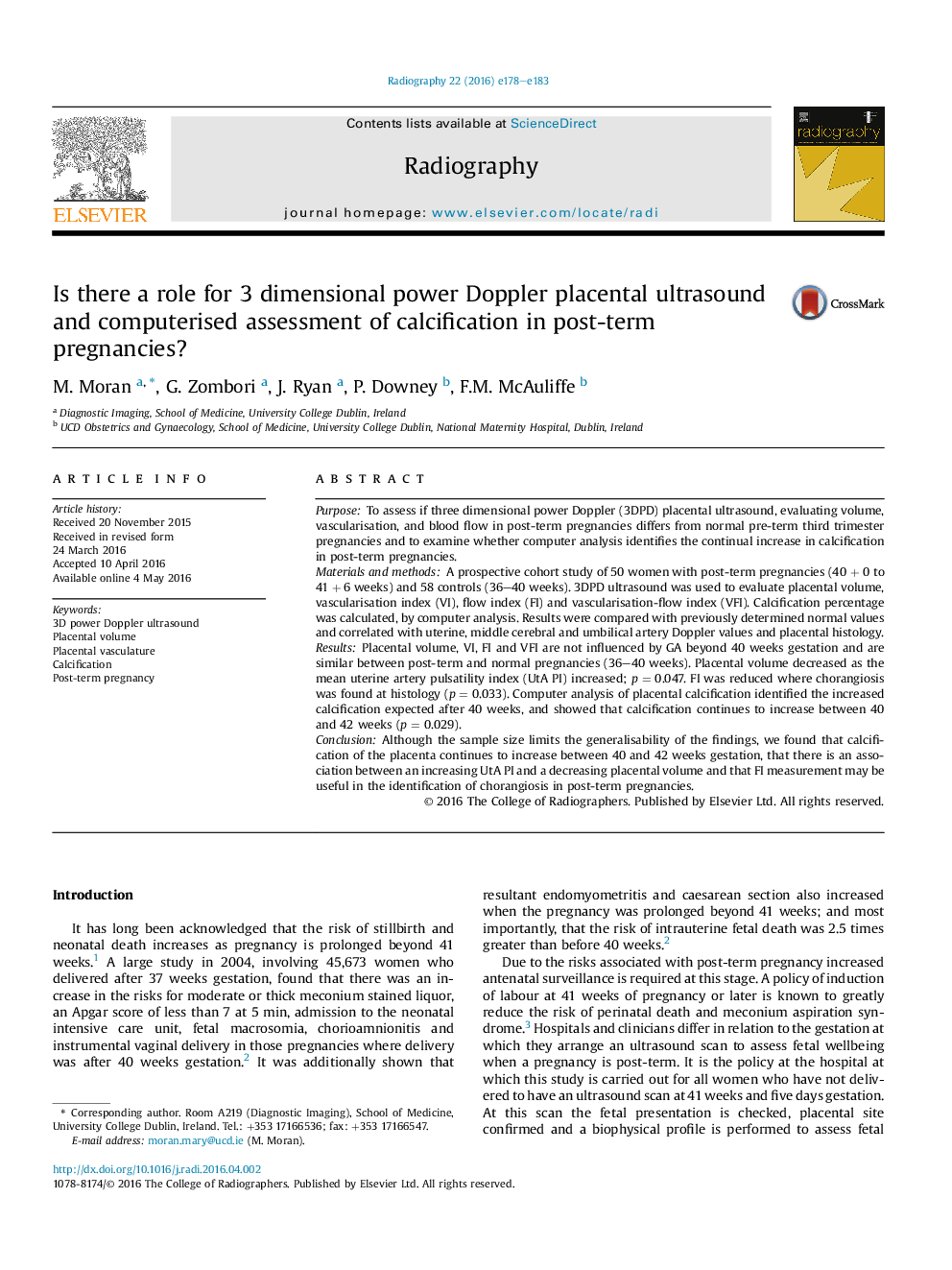| Article ID | Journal | Published Year | Pages | File Type |
|---|---|---|---|---|
| 2735671 | Radiography | 2016 | 6 Pages |
•Placental volume does not increase when pregnancy advances beyond 40 weeks gestation.•Placental volume decreases in post-term pregnancies as the mean uterine artery pulsatility index increases.•Flow index within the placenta is reduced when chorangiosis is present.•Computer analysis of placental calcification identifies the increased calcification expected after 40 weeks gestation.
PurposeTo assess if three dimensional power Doppler (3DPD) placental ultrasound, evaluating volume, vascularisation, and blood flow in post-term pregnancies differs from normal pre-term third trimester pregnancies and to examine whether computer analysis identifies the continual increase in calcification in post-term pregnancies.Materials and methodsA prospective cohort study of 50 women with post-term pregnancies (40 + 0 to 41 + 6 weeks) and 58 controls (36–40 weeks). 3DPD ultrasound was used to evaluate placental volume, vascularisation index (VI), flow index (FI) and vascularisation-flow index (VFI). Calcification percentage was calculated, by computer analysis. Results were compared with previously determined normal values and correlated with uterine, middle cerebral and umbilical artery Doppler values and placental histology.ResultsPlacental volume, VI, FI and VFI are not influenced by GA beyond 40 weeks gestation and are similar between post-term and normal pregnancies (36–40 weeks). Placental volume decreased as the mean uterine artery pulsatility index (UtA PI) increased; p = 0.047. FI was reduced where chorangiosis was found at histology (p = 0.033). Computer analysis of placental calcification identified the increased calcification expected after 40 weeks, and showed that calcification continues to increase between 40 and 42 weeks (p = 0.029).ConclusionAlthough the sample size limits the generalisability of the findings, we found that calcification of the placenta continues to increase between 40 and 42 weeks gestation, that there is an association between an increasing UtA PI and a decreasing placental volume and that FI measurement may be useful in the identification of chorangiosis in post-term pregnancies.
